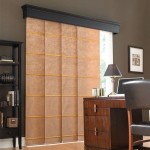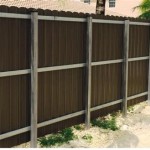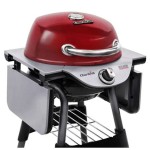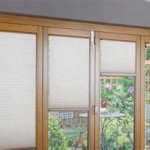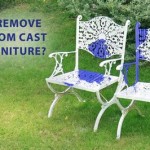Understanding Patio Umbrella Bases: A Comprehensive Guide
A patio umbrella base is an essential component for any outdoor living space that incorporates a patio umbrella. Its primary function is to provide stability and support to the umbrella, preventing it from toppling over, especially in windy conditions. The selection of an appropriate base is crucial for ensuring safety, longevity, and the overall aesthetic appeal of the outdoor area. Numerous factors influence the choice, including umbrella size, material, weight, and the prevailing weather conditions in the region.
Patio umbrella bases vary widely in their design and construction. Common materials include concrete, steel, cast iron, resin, and filled plastic. Each material offers different levels of durability, weight, and aesthetic appeal. The weight of the base is a critical factor; a heavier base provides greater stability, particularly for larger umbrellas or in areas prone to strong winds. The design must also accommodate the umbrella pole's diameter, ensuring a secure and snug fit. Failure to select a base that adequately supports the umbrella can lead to damage to the umbrella itself, potential injury to individuals nearby, and unwanted aesthetic disruption to the patio setting.
The following sections will delve into the key aspects of patio umbrella bases, providing a detailed overview of their types, considerations for selection, and maintenance practices.
Types of Patio Umbrella Bases
Patio umbrella bases are categorized based on their materiality, design, and intended application. Understanding these distinctions is crucial for selecting the most suitable base for a specific patio environment and umbrella type.
Concrete Bases: Concrete bases are among the most robust and durable options available. They offer substantial weight, providing excellent stability even in strong winds. Concrete bases are typically finished with a sealant to protect against weathering and staining. They come in various shapes and sizes, including round, square, and rectangular designs. The primary disadvantage of concrete bases is their weight, making them difficult to move or relocate. They are also more susceptible to cracking if subjected to significant impacts or freezing temperatures without proper protection.
Steel Bases: Steel bases offer a good balance of weight and portability. They are typically constructed from powder-coated steel, providing resistance to rust and corrosion. Steel bases are often available in a variety of finishes and styles, allowing them to complement different patio furniture sets. While steel bases are generally lighter than concrete options, they still provide adequate stability for most standard-sized patio umbrellas. Heavier gauge steel tends to provide better support, especially in windy conditions. Some steel bases can be filled with sand or water to increase their weight and stability.
Cast Iron Bases: Cast iron bases are known for their classic aesthetic appeal and exceptional durability. They are typically heavier than steel bases, providing excellent stability. Cast iron bases are often intricately designed, adding a touch of elegance to the patio setting. However, cast iron is susceptible to rust if not properly maintained. Regular cleaning and occasional sealing are necessary to prevent corrosion and extend the life of the base. The weight of cast iron bases can also make them challenging to move.
Resin Bases: Resin bases are made from durable plastic polymers, offering a lightweight and weather-resistant alternative to concrete, steel, or cast iron. They are available in a wide range of colors and styles, allowing them to easily integrate into any patio design. Resin bases are relatively easy to clean and maintain. Many resin bases can be filled with sand or water to increase their weight and stability. However, they may not provide the same level of stability as heavier materials like concrete or cast iron, especially in high-wind areas. The quality of the resin is also a factor; cheaper resins may degrade over time when exposed to sunlight and extreme temperatures.
Filled Plastic Bases: These bases are similar to resin bases but are specifically designed to be filled with sand or water. This allows for adjustable weight depending on the conditions. They are often more affordable than other types of bases and are easier to move when empty. However, they may not be as aesthetically pleasing as other options, and the plastic can become brittle and crack over time, especially with prolonged exposure to the sun.
Deck Mounted Bases: These bases are designed to be permanently attached to a deck or patio surface. They offer the most secure and stable option, particularly in areas with high winds. Deck-mounted bases typically require some installation, such as drilling holes and securing the base with bolts or screws. The installation process must be carefully executed to ensure the base is properly anchored and able to withstand the forces exerted by the umbrella in windy conditions. Deck-mounted bases are less flexible in terms of relocation, as they are permanently affixed to the surface.
Factors to Consider When Selecting a Patio Umbrella Base
The selection of an appropriate patio umbrella base involves careful consideration of several factors to ensure safety, stability, and compatibility with the umbrella and the surrounding environment.
Umbrella Size and Weight: The size and weight of the patio umbrella are primary determinants of the base's required weight and stability. Larger umbrellas, with wider canopies, are more susceptible to wind forces and require heavier bases to prevent tipping. A general guideline is that the base should weigh at least 10 pounds per foot of umbrella diameter. For example, a 9-foot umbrella typically requires a base weighing at least 90 pounds. However, this is a minimum requirement, and heavier bases may be necessary in particularly windy areas. Cantilever umbrellas, which have an offset pole, require significantly heavier bases to counteract the cantilevered weight.
Weather Conditions: The prevailing weather conditions in the area are a crucial factor in selecting a patio umbrella base. Areas prone to strong winds require significantly heavier bases to prevent the umbrella from toppling over or being damaged. In coastal areas, where winds are often stronger and more frequent, heavier bases made from durable materials like concrete or cast iron are recommended. In areas with less frequent or intense winds, lighter bases made from steel or resin may suffice. Consider the average wind speeds and the potential for gusts when determining the appropriate weight and stability of the base.
Umbrella Pole Diameter: The diameter of the umbrella pole must be compatible with the opening in the base. Most patio umbrella bases are designed to accommodate standard pole diameters, typically ranging from 1.5 to 2 inches. However, it is essential to verify the pole diameter and ensure the base opening is appropriately sized. Using a base with an opening that is too large can result in instability and wobbling, while an opening that is too small will prevent the umbrella from fitting properly. Some bases include adjustable collars or adapters to accommodate different pole diameters.
Base Material and Durability: The material of the base significantly impacts its durability, resistance to weathering, and overall lifespan. Concrete, steel, and cast iron bases offer excellent durability and stability but can be heavier and more expensive. Resin and filled plastic bases are lighter and more affordable but may not be as durable or weather-resistant. Consider the local climate and the level of maintenance required for each material when making a selection. In harsh climates, materials resistant to rust, corrosion, and UV degradation are essential.
Portability: The portability of the base is a significant consideration, especially if the umbrella needs to be moved frequently. Heavier bases, such as concrete or cast iron, are more challenging to move and may require assistance. Lighter bases, such as resin or filled plastic, are easier to relocate. If portability is a priority, consider bases with built-in handles or wheels to facilitate movement. However, ensure that the base is still sufficiently heavy to provide adequate stability when in use.
Aesthetic Considerations: The aesthetic appeal of the patio umbrella base should complement the overall design of the outdoor space. Bases are available in a wide range of styles, colors, and finishes to match different patio furniture sets and landscaping themes. Consider the color and texture of the base in relation to the umbrella, the patio furniture, and the surrounding environment. A well-chosen base can enhance the overall aesthetic appeal of the patio, while a poorly chosen base can detract from it.
Maintaining Your Patio Umbrella Base
Proper maintenance extends the lifespan and aesthetic appeal of a patio umbrella base. Regular cleaning and preventative measures will help ensure the base remains functional and attractive for years to come.
Regular Cleaning: Regular cleaning is essential for removing dirt, debris, and stains from the base. The frequency of cleaning depends on the environment and the usage of the umbrella. In dusty or coastal areas, more frequent cleaning may be necessary. For concrete, steel, and cast iron bases, use a mild detergent and water solution to scrub the surface. Rinse thoroughly with clean water and allow the base to dry completely. For resin and filled plastic bases, a garden hose can be used to rinse off dirt and debris. Avoid using harsh chemicals or abrasive cleaners, as these can damage the finish or material of the base.
Rust Prevention: Steel and cast iron bases are susceptible to rust if not properly protected. To prevent rust, regularly inspect the base for signs of corrosion. If rust is present, remove it with a wire brush or sandpaper. Apply a rust-inhibiting primer and then paint the base with a rust-resistant paint. Ensure the paint is compatible with the base material. Periodically apply a protective coating or sealant to prevent moisture from penetrating the surface and causing rust. Store the base in a dry place during the off-season to minimize exposure to moisture.
Protection from the Elements: Exposure to the elements can cause damage to patio umbrella bases over time. Direct sunlight can cause fading and discoloration of resin and plastic bases. Freezing temperatures can cause concrete to crack and expand. To protect the base from the elements, consider covering it with a protective cover when not in use. Store the base indoors or in a sheltered area during the off-season. If storing the base outdoors, ensure it is properly secured and protected from snow and ice accumulation.
Checking for Damage: Regularly inspect the base for signs of damage, such as cracks, chips, or loose components. Address any damage promptly to prevent further deterioration. Small cracks in concrete bases can be repaired with concrete patching compounds. Loose components, such as screws or bolts, should be tightened or replaced. If the base is severely damaged, it may need to be replaced to ensure safety and stability. Check the mechanisms that secure the umbrella pole to ensure they are functioning properly.
Proper Storage: During the off-season or periods of prolonged non-use, proper storage is crucial for preserving the condition of the patio umbrella base. Clean the base thoroughly before storing it. Store the base in a dry, sheltered location to protect it from moisture and extreme temperatures. If storing the base outdoors, cover it with a waterproof cover to prevent damage from the elements. For filled plastic bases, empty the sand or water before storing them to reduce the weight and prevent cracking. Storing the base properly will help extend its lifespan and ensure it is ready for use when needed.

Soporte Para Sombrilla De Patio Base Paraguas Decoracion Jardin Sombra Ebay

Accesorios Para Sombrilla De Patio Piezas Soporte Metal Cubierta Piscina Playa Tubo Porta

Base De Sombrilla Rellenable Perfecl Soporte Para Mesa Patio Trasero Walmart En Línea

Base Para Sombrilla Jardin Negro 18 True Value 852006 Hágalo Home Center

Soporte Para Sombrilla De Patio Base Acero Resistente Poste Luces Cadena Bandera Su Elección Color Etsy México

Soporte Para Sombrilla De Patio Base Paraguas Decoracion Jardin Sombra Ebay

Acomoda Textil Base De Sombrilla Ajustable Redonda 50 Cm Ø Con Ruedas Para Jardín Patio Terraza

Base Para Sombrilla De Playa Y Jardin Plegable Resistente Mercadolibre

Base Soporte Universal Para Sombrillas De Jardín Pie Sombrilla 52 Cm Ø 38 48 Mm Estabilidad Extra Leroy Merlin
Sunvilla Pembrooke 59 5 Lb Granite Umbrella Base Costco


